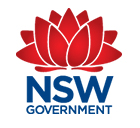Personal Safety
Child AbuseQuestions about reporting
what is a report?
A report is information provided to Community Services by any person who suspects there are current concerns for a child (under 16 years) or young person (age 16 to 17 years) due to risk of significant harm from abuse or neglect.
I am not sure whether the child or young person has been abused or not, but I am worried. Should I make a report?
You can make a report to Community Services if you suspect that a child or young person is at risk of significant harm. This means you have current concerns for the safety, welfare or wellbeing of a child or young person.
You don’t have to be certain, you only need to make sure your concerns are well founded and based on information you know or have from a reliable source.
what is ‘risk of significant harm’?
Members of the community and mandatory reporters who suspect that a child or young person is at risk of significant harm (the statutory threshold) should report their concerns to the Child Protection Helpline.
A child or young person is at risk of significant harm if the circumstances that are causing concern for the safety, welfare or well being of the child or young person are present to a significant extent.
Significant means that which is sufficiently serious to warrant a response by a statutory authority irrespective of a family’s consent.
What is significant is not minor or trivial and may reasonably be expected to produce a substantial and demonstrably adverse impact on the child or young persons safety, welfare or well being.
In the case of an unborn child, what is significant is not minor or trivial and may reasonably be expected to produce a substantial and demonstrably adverse impact on the child after the child’s birth.
Significance can result from a single act or omission or an accumulation of these.
Community Services can also receive and assess reports in the following circumstances:
- before the birth of a child, where there may be risk of significant harm after the child is born
- where a child (aged under 16) is homeless
- where a young person (aged 16 or 17) is homeless
Where possible, the young person should be involved in the decision to report unless there are good reasons for this not happening.
Tell Community Services if the young person is against the report being made as we must consider the young person’s wishes when deciding to assess or investigate the report and how to do this.
is there any legal protection for reporters?
Reports made to Community Services are confidential and the reporter’s identity is generally protected by law.
However, current legislation allows NSW Police access to the identity of the reporter, if this is needed in connection with the investigation of a serious offence against a child or young person.
The request must come from a senior law enforcement officer and the reporter must be informed that their identity is to be released – unless informing them of the disclosure will prejudice the investigation.
can I make an anonymous report?
Yes you can. But it does mean we won’t be able to contact you again to discuss what you’ve told us and we can’t give you any feedback on your report.
The identity of all reporters, mandatory or not, is confidential.
Your identity, or any information which might reveal your identity (such as your address or workplace), can’t be disclosed by anyone without your consent, except on rare occasions, where information about the report is crucial to court proceedings.
I have made a report about one child in the family. What happens to the siblings?
Whenever Community Services responds to a report it must also consider the immediate safety, welfare and wellbeing of any other children or young people living in the same home, and take appropriate action.
This applies to all other children and young people in the home, not just brothers and sisters.
how does Community Services assess reports?
When you telephone Community Services to make a report, a child protection caseworker at the Helpline will make a preliminary initial assessment to determine what action needs to be taken.
The caseworker is specially trained to ask you relevant questions, to ensure that they get all the information they can about the safety, welfare and wellbeing of the child or young person.
The caseworker can also consider any information held by Community Services about the child or young person and/or their family such as previous reports or recent contact with the family.
What happens next depends on the information received by Community Services.
The matter might be closed as no risk of significant harm is indicated or we may ask a local Community Services Centre to make further assessment.
Sometimes the child or young person and their family is visited immediately because the information indicates the child or young person is in immediate danger.
If the child or young person is at risk of significant harm, we try to work with the family, other agencies and professionals to make sure they are safe.
If we think a child or young person is in immediate danger, we will move them to a safe place. We involve the child or young person and their family as much as possible in decisions that affect them.
See what if a report is made about me or a child in my care?


